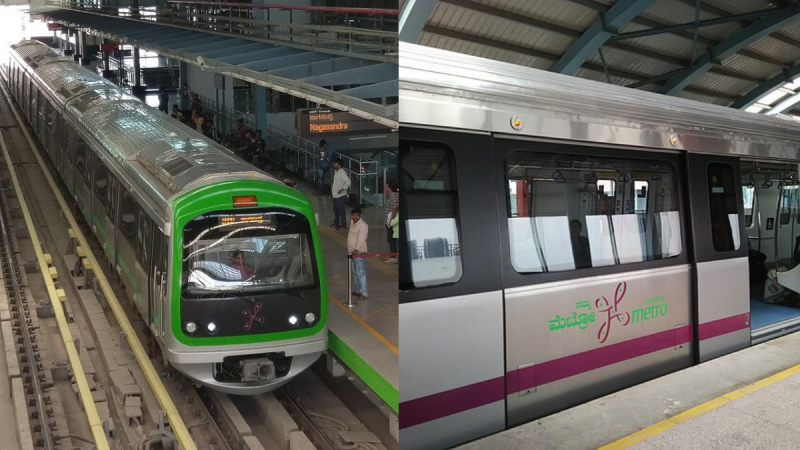It was far from a smooth start to the week for Bengaluru’s office-goers, as delays on the Namma Metro caused widespread commuter woes. A sudden reduction in metro frequency to 10-minute intervals during the Monday morning rush hour triggered heavy crowds, overcrowded coaches, and widespread public anger.
Commuters Left Stranded Amid Bengaluru Metro Train Delays
Major metro stations across the city, including Majestic and Magadi Road, witnessed long queues and packed platforms as Bengaluru Metro Rail Corporation Limited (BMRCL) reduced the frequency of trains, citing reduced ridership due to a public holiday. But for most office-goers, the move came as an unpleasant surprise.
Social media was flooded with videos and images of commuters struggling to squeeze into overpacked trains. Several passengers took to X (formerly Twitter) to call out the mismanagement. Bengaluru Central MP PC Mohan was among those who criticised the decision, labelling it “unacceptable mismanagement.”
He further added, “Assuming everyone has a holiday and reducing train frequency to 10 minutes during peak hours created absolute chaos.”
BMRCL Responds After Facing Flak
In response to the backlash, BMRCL issued a press statement detailing the corrective measures taken. BMRCL pressed four additional trains into service from Baiyappanahalli to Majestic and added seven extra trips from Majestic, Garudacharpalya, and Whitefield.
To ease the anticipated evening rush, metro frequency from ITPL was also adjusted to five minutes between 5:30 PM and 6:30 PM.
However, for many regular commuters, the response seemed like a case of too little, too late.
Why Bengaluru Needs More Reliable Metro Services
Bengaluru’s dependence on the metro network continues to grow, especially as traffic congestion worsens across the city. Incidents like these serve as a wake-up call for more robust planning and real-time communication from BMRCL.
Daily commuters rely heavily on punctual metro services, and any disruption—especially during peak hours—affects not just schedules, but productivity and public trust.
Especially for regular commuters, reliable transport isn’t just a convenience, it’s a necessity.
Cover Image Courtesy: Wikimedia Commons

